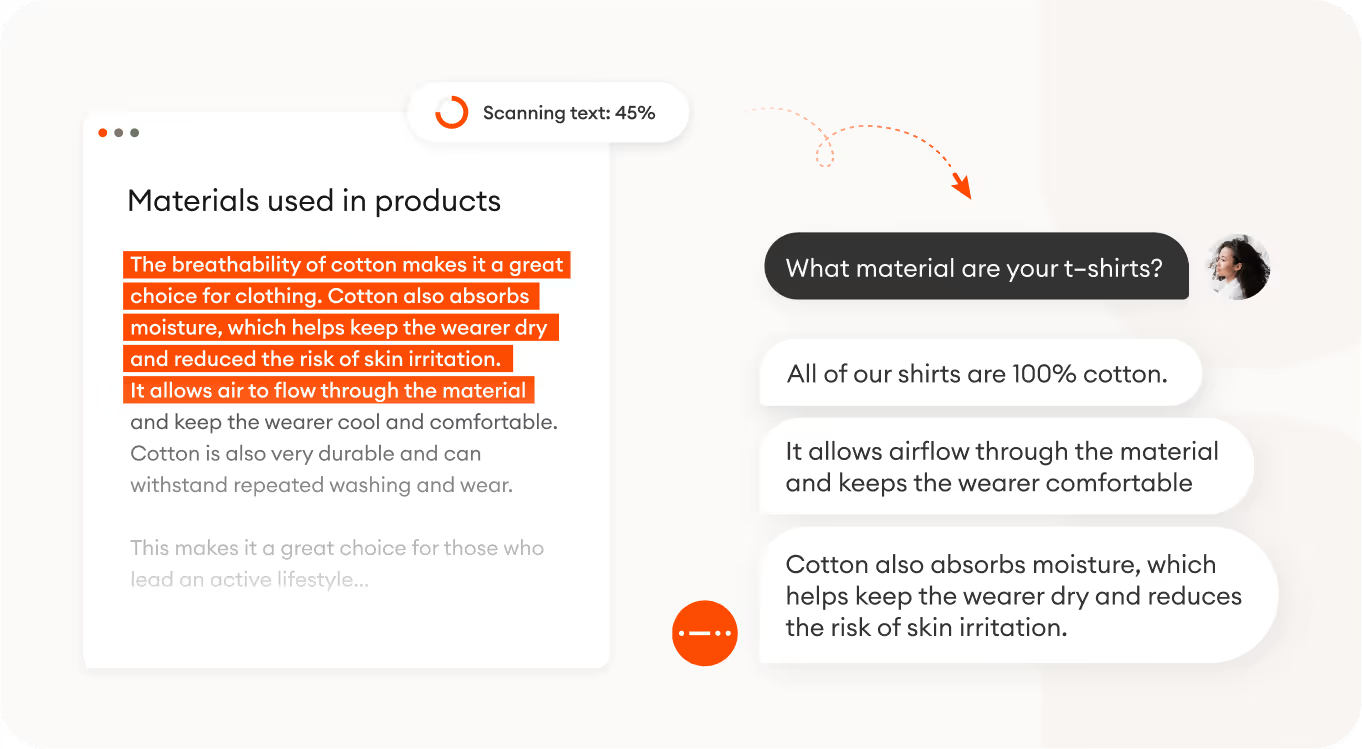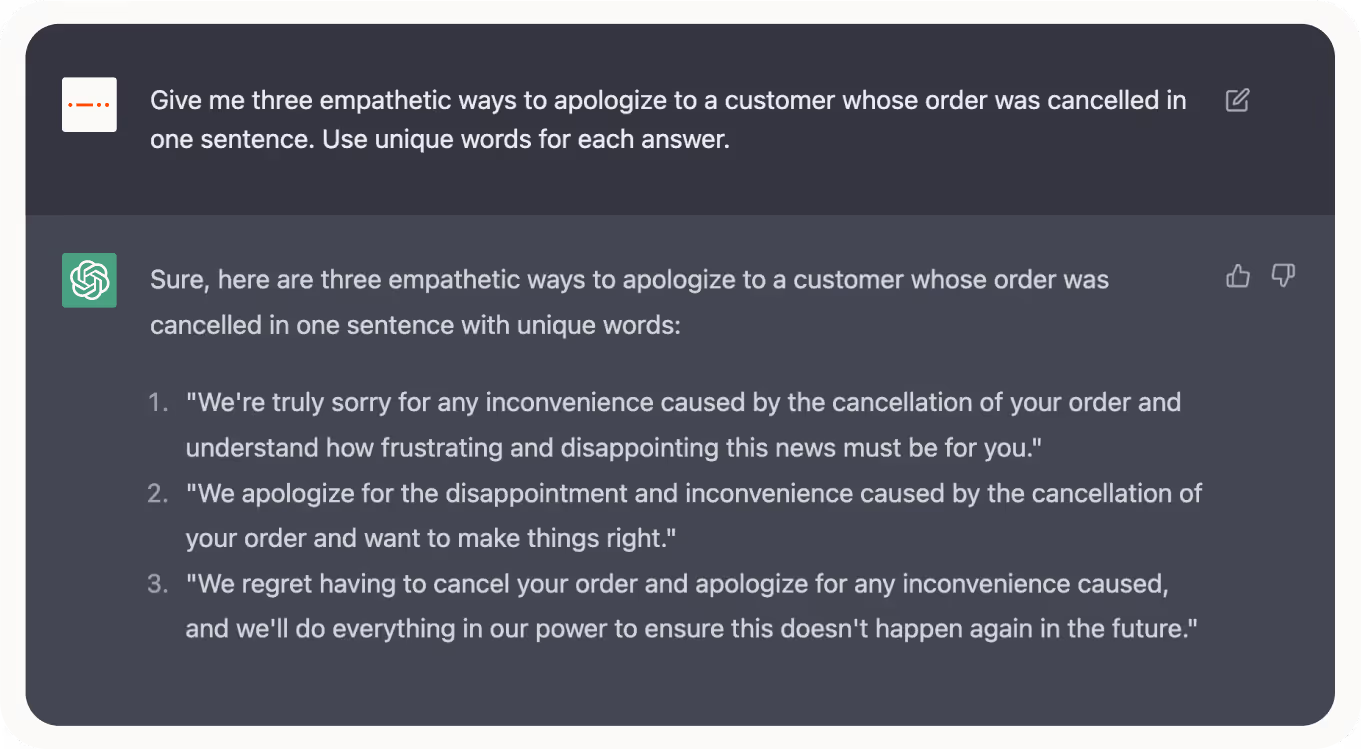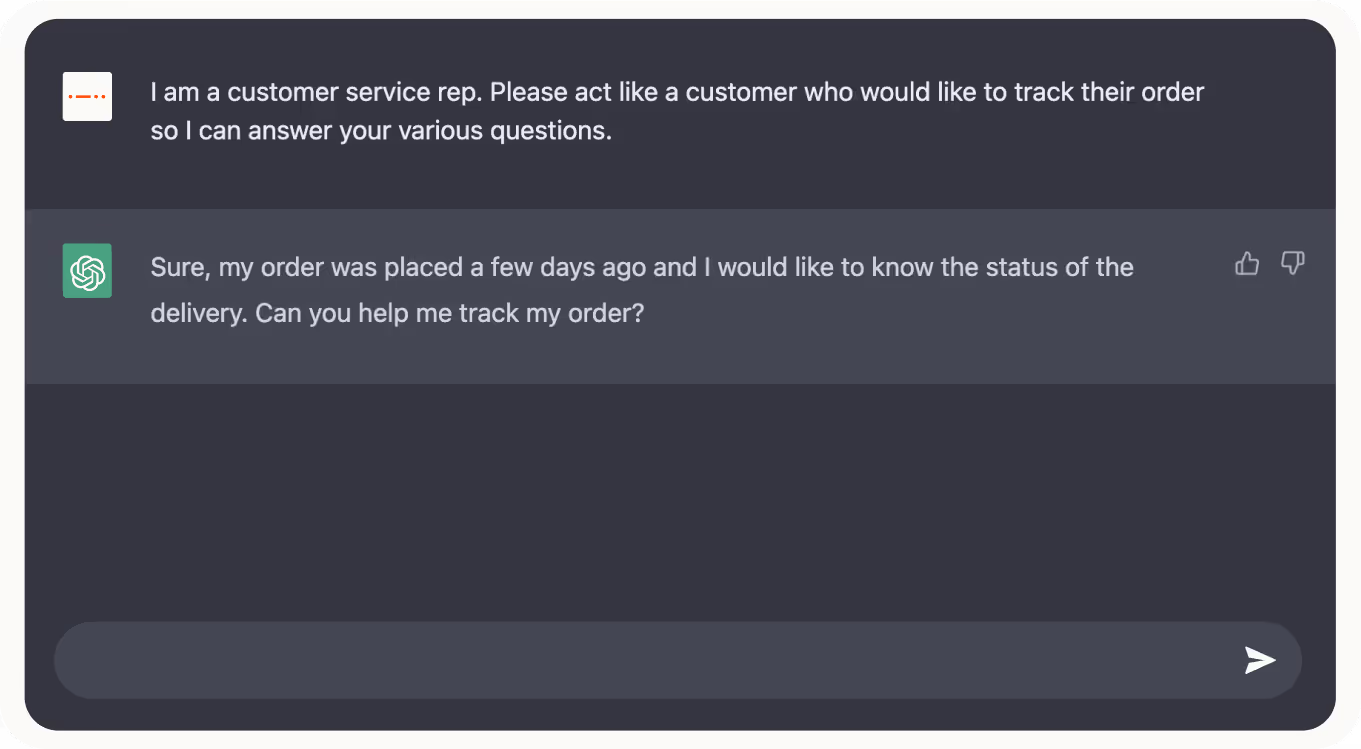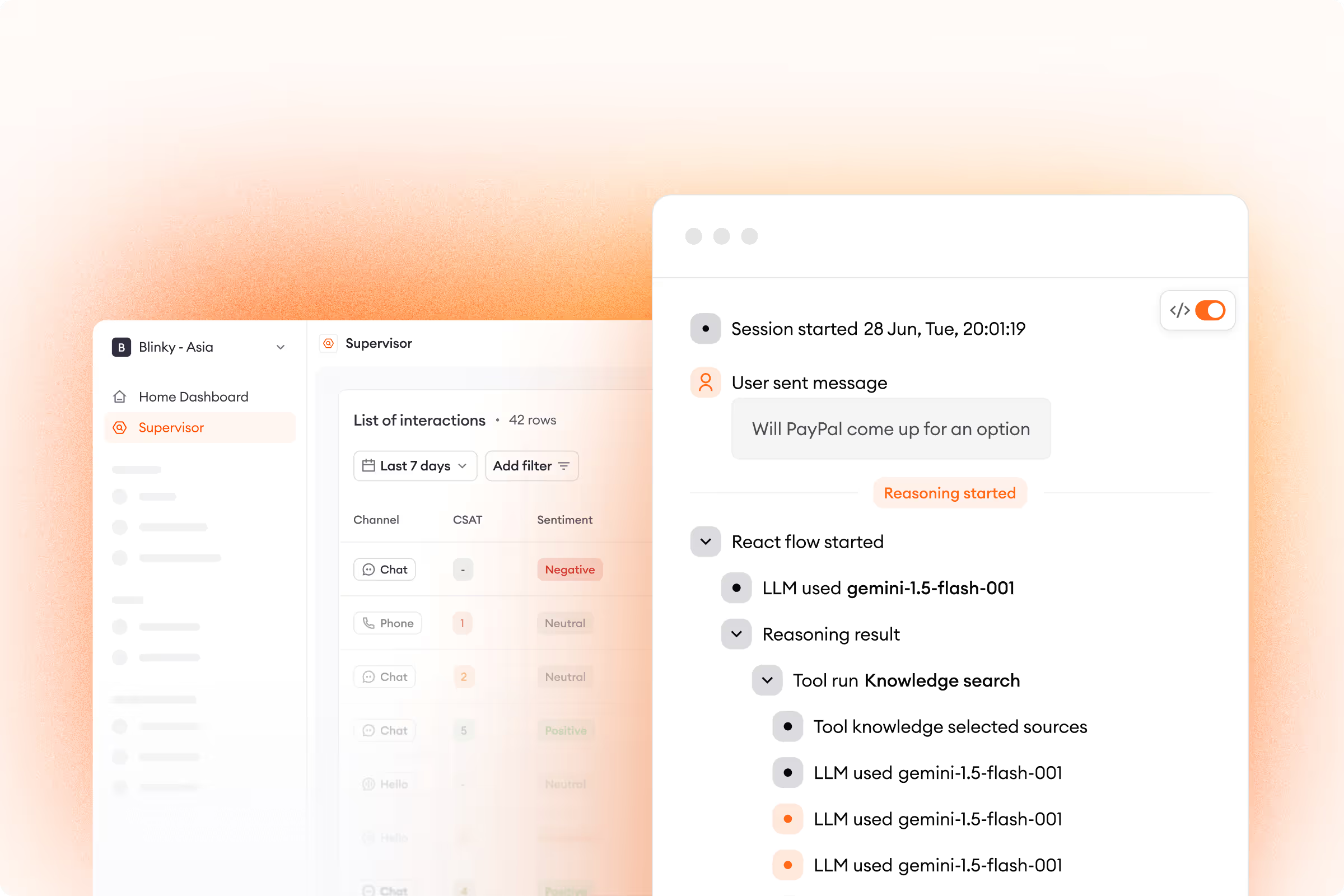The recent launches of GPT4 and Google’s Bard have sparked renewed interest in artificial intelligence (AI), conversational AI chatbots, and how this tech can be applied in customer service.

In 2022, 88% of online shoppers interacted with a chatbot. Practically all of us are using them for self-service, but more customers are looking for something on top of getting an answer in real-time — 63% expect personal, human-like responses.
Powerful as they may be, AI solutions aren’t 100% effective unless you can customize their responses to match your brand’s distinct voice and tone.
How do you go about building a fully conversational AI platform? Here are 7 best practices that’ll put you on the path to success.
7 best practices for creating a conversational AI chatbot
1. Give your chatbot a persona
There’s a reason conversational AI chatbots have customer satisfaction rates close to 90%, higher than any other support channel — they’re a natural extension of your customer support team that’s available 24/7.
To unleash your chatbot’s full potential, it should interact with customers the same way your agents do.
And you don’t have to leave this up to chance. It’s possible to inject your brand’s personality into key points in the customer journey. For instance, when initially greeting customers, you don’t have to limit yourself to Hi, how can I help? This is your chance to set the tone for this interaction and the experience customers will have.
Here are some alternative intros you can choose:
- Introduce your chatbot by name: Nothing is more personal than giving your chatbot a name and an avatar.
Example: Hi, I’m Betty the Bot. I’m here if you need me.
- Promote a product or special offer: You can open the conversation by letting shoppers know about your new arrivals or any ongoing promotions.
Example: Hello! Just so you know, you can save 15% on all orders over $99.
- Add emojis: Who says greetings just have to be words? Try adding emojis to your introduction.
Example: Welcome 👋 What can I help you with today?
And the personalization doesn’t stop there. You should also consider how the chatbot will ask for feedback or what it should say when it’s handing you over to an agent. To be truly conversational, you don’t have to settle for plain canned responses. Getting creative will lead to more engaging customer exchanges.

2. Have your chatbot mimic human conversation
Users prefer quick, actionable pieces of information. If they have to read an essay to get their answer, they’re likely not getting the best customer experience. Thankfully, AI technology offers another quick fix that enhances conversational flow.
Virtual assistants can break apart answers into shorter spurts of information. Now, instead of information overload, customers receive small bits of digestible text every couple of seconds that aren’t a chore to read. This technique optimizes conversational interfaces and helps the dialog feel more human-like.

3. Leverage ChatGPT
Not sure what text to input to get your chatbot up and running? There’s an app for that.
ChatGPT is an excellent starting point for anyone in customer service trying to augment the user experience. Looking to alter your tone, sound more empathetic, or summarize a longer piece of text? The number of use cases is limitless.
Throw your prompt into ChatGPT and implement any templates that catch your eye.

And ChatGPT’s handiness for customer service representatives doesn’t stop there. Use it to role-play various scenarios to ensure your agents and chatbot deliver the most appropriate response to every situation.

4. Determine your end goal
Knowing the primary aim of your customer interactions can go a long way in helping you decide which prompts you want your conversational AI chatbot to employ.
Looking to improve metrics like resolution times? Make your chatbot as detailed and specific as possible.
Hoping to boost customer engagement? Throw some flair into your answers.
Trying to leverage chat to sell more products? Reach out to shoppers proactively and suggest products relevant to them.
Once you identify what results you’re expecting when customers converse with virtual assistants, it’ll be easier to create individual responses specifically geared to generating a particular outcome.
5. Listen to the customer
A powerful feature of conversational AI platforms is that they collect customer feedback after every single interaction. Simple questions like Did I help resolve your issue? or How would you rate your experience today? can be treasure troves of information concerning what you’re doing well and what needs improvement.
Customer service automation platforms let you tap into the voice of your customer (VOC) by tracking which interactions customers are most satisfied with. Once you know what’s working, add it across other responses to replicate your success. In that same vein, whenever you spot anything that’s frustrating customers, swap it out for something until you find an effective solution.
And this feedback isn’t limited to your website’s chat widget. AI chatbots have an omnichannel reach, meaning they can interact with customers on your mobile app and social media channels, like Instagram and Facebook Messenger. By syncing feedback from whatever channels your customers are using, leading solutions give you a 360º view of your top customer needs.
Find out how support teams can embrace AI tools while keeping personal relationships with customers in our on-demand webinar, “Building a CS Team That Balances Tech and the Human Touch.”

6. Make it multilingual
Whenever companies start catering to a more diverse customer base, they often think they’re limited to offering help in the languages that their customer support agents speak. But they’re not.
Conversational AI chatbots can be quickly trained to learn almost any language thanks to advanced natural language processing (NLP). Not only does this make today’s top solutions completely multilingual, but it also lets them recognize when a user switches languages mid-conversation and follow suit.
Don’t cause customers any needless discomfort. Approach them in their preferred language so they can enjoy a hassle-free experience that doesn’t require them to step out of their comfort zone.
7. Route users to agents effortlessly
Conversational AI chatbots are capable of automating up to 70% of customer chats — your most repetitive work. However, there will always be a fair amount of more complex cases that’ll require the expertise of your human agents. On top of that, there are those customers who only want to chat with a human agent in a contact center no matter what.
Many customer support teams drop the ball when it comes to handing tickets over from a virtual agent to a human one. They may require customers to repeat themselves once they reach a service rep, and basic chatbots might not offer the option to transfer at all.
Have your chatbot seamlessly transfer customers to the appropriate agent in a natural, frictionless way. Make sure an agent is never more than a click away, and create direct, easy-to-understand responses for your bot. Would you like to speak to an agent? or I’m transferring you to a support representative can work wonders.
Building better bots
When it comes to configuring your conversational AI chatbot, remember that it should live up to its name — it should drive compelling conversations. Answering customer questions is important, but don’t shy away from sprucing up your conversational experiences.
AI tools can showcase your brand voice, display empathy, and give your virtual agent a personality all its own.

.avif)







